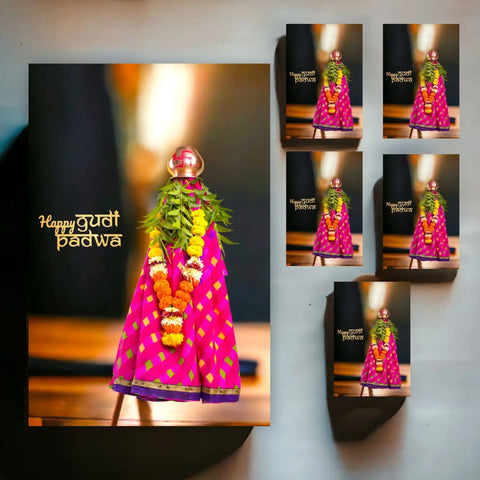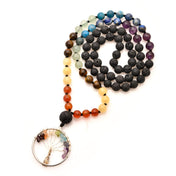Introduction
Gudi Padwa ( a new year for marathi) is a vibrant Indian festival celebrated by hindus primarily in Maharashtra parts of india, marking the beginning of the hindu new year according to the lunisolar hindu calendar (Marathi calendar). This auspicious occasion falls on the first day of the Chaitra month and is characterized by its rich cultural significance.
The festival invites individuals to reconnect with their roots and honor traditions that have been passed down through generations, making it a cornerstone of Marathi culture.
To enhance your Gudi Padwa celebrations, you might consider purchasing a gudi kit for decoration or gifting purposes. Additionally, sending out greeting cards to loved ones can add a personal touch to your wishes during this festive season.
Historical Background
The origins of Gudi Padwa trace back to ancient times, rooted deeply in mythology. This festival marks the beginning of the Marathi New Year and is believed to commemorate the return of Lord Rama to Ayodhya after defeating Ravana. Celebrating this day acknowledges his victory and symbolizes new beginnings, hope, and prosperity.
Another significant aspect involves Lord Brahma, who is said to have created the universe on this auspicious day. The festival encapsulates a blend of spiritual devotion and cultural pride, emphasizing the importance of starting the year with positivity and gratitude.
The Symbolism of Gudi
The Gudi is a vibrant representation of the festival, intricately designed to evoke prosperity and joy. It consists of several key elements:
- Bamboo Stick: Represents strength and resilience, symbolizing the spirit of victory.
- Colorful piece of Cloth: Often in bright hues, it signifies cheerfulness and new beginnings.
- Flower garland: Adorning the Gudi, they embody beauty and the freshness of spring.
- Mango Leaves: Placed atop the Gudi, these leaves symbolize prosperity and renewal.
- Neem Leaves: Known for their medicinal properties, they represent health and well-being.
- Kalash / Copper Pot : Placed upside down on the gudi, it symbolizes the triumph of good over evil.
Hoisting the Gudi
The Gudi is traditionally hung outside homes and temples, as a way to welcome abundance and good fortune into one's life. It serves as a reminder of our connection to nature and the importance of preserving its cycles. This symbolism is deeply rooted in ancient Indian culture, which celebrates the changing seasons and their impact on agriculture.
During the festival of Gudi Padwa, families come together to prepare and raise the Gudi. Children are often involved in this process, learning about their cultural heritage through hands-on participation. The Gudi is then raised with great fanfare, accompanied by traditional music and dance.
As part of the celebration, people also gather for community meals where they share traditional dishes such
The Significance of Gudi Padwa
Gudi Padwa marks the beginning of a new year for many communities in India, including Maharashtrians and Konkanis. It falls on the first day of Chaitra month, according to the Hindu calendar. This auspicious day commemorates Lord Brahma's creation of the universe and is seen as a time for renewal, growth, and
Traditions and Celebrations
On the day before Gudi Padwa, homes are thoroughly cleaned and decorated with colorful rangoli patterns to welcome the festival. People often wear new clothes on this day as it signifies starting fresh in the new year. Women also adorn themselves with traditional jewelry and bindis (decorative markings on the forehead).
In Maharashtra, where Gudi Padwa originated from, people start their day by
Each component holds deep significance in celebrating Gudi Padwa, creating an emblem of hope and happiness for the coming year.
Rituals and Traditions during Gudi Padwa
Celebrating Gudi Padwa involves several cherished rituals that enhance the festive spirit:
- Preparation and House Cleaning: Homes are thoroughly cleaned and decorated, symbolizing the removal of negativity and welcoming prosperity.
- Raising the Gudi: The Gudi is created using a bamboo stick adorned with vibrant cloth, flowers, and mango leaves. It is hoisted outside homes at dawn, serving as a beacon of joy and victory.
- Prayers and Offerings: Families gather to offer prayers to deities, expressing gratitude for blessings. Traditional sweets and fruits are presented as offerings.
- Traditional Attire: Participants wear beautiful Maharashtrian attire. Women don sarees often in shades of green or yellow, while men dress in kurtas, embracing their cultural roots during this significant occasion.
Special Foods for Gudi Padwa Celebrations
Gudi Padwa is a feast for the senses, showcasing a delightful array of traditional dishes that reflect the rich tapestry of Maharashtrian cuisine. Key culinary highlights include:

Puran Poli
This cherished sweet flatbread stands as a cornerstone of Maharashtrian festive cuisine. The delicate preparation involves:
- A smooth filling (puran) made from:
- Yellow chana dal (split Bengal gram)
- Aromatic cardamom powder
- Golden jaggery
- A hint of nutmeg
- A soft outer covering (poli) crafted from:
- Fine wheat flour
- A touch of turmeric
- Pure ghee for richness
The flatbread is traditionally served hot, drizzled with melted ghee, creating a harmonious blend of textures - crispy exterior with a molten, sweet interior. Its golden-yellow hue and rich taste symbolize abundance and prosperity in Maharashtrian culture.
Traditional Tip: Experienced cooks recommend kneading the dough with milk instead of water for extra softness and flavor depth.
The preparation requires skilled hands to achieve the perfect thickness, ensuring the filling stays intact while rolling and cooking on a hot griddle.

Shrikhand: A Festive Yogurt Delicacy
This luxurious dessert transforms humble yogurt into a silken delicacy through a meticulous preparation process. The foundation begins with hung curd (chakka), which is strained yogurt that achieves its signature thick, creamy consistency after hours of draining.
Key Ingredients and Preparation:
- Hung yogurt: Strained for 6-8 hours until thick and creamy
- Saffron strands: Soaked in warm milk for intense color and aroma
- Green cardamom powder: For authentic Indian sweetness
- Powdered sugar: Carefully folded in to maintain texture
Traditional Garnishes:
- Crushed pistachios
- Slivered almonds
- Additional saffron strands
- Charoli seeds (chironji)
Expert Tip: For the smoothest texture, whisk the hung curd alone before adding other ingredients, and fold in the sugar gradually to prevent lumps.
The dessert's rich yellow hue, courtesy of premium saffron, symbolizes prosperity in Maharashtrian culture. Modern variations incorporate seasonal fruits like mango or rose essence, though traditionalists prefer the classic preparation.
Serving Suggestions:
- Chilled for at least 2 hours before serving
- Paired with hot puris for a contrasting temperature experience
- Garnished just before serving to maintain garnish crispness
- Served in traditional katori (metal bowls) for an authentic touch

Sabudana Khichdi
A light yet satisfying dish crafted from soaked tapioca pearls, Sabudana Khichdi holds special significance during religious fasting periods, particularly in Maharashtrian households. This protein-rich preparation combines the following key ingredients:
Core Components:
- Perfectly soaked sabudana (tapioca pearls)
- Roasted peanuts for protein and crunch
- Cubed potatoes
- Green chilies for heat
- Curry leaves for aromatic depth
Traditional Preparation Tips:
- Soak sabudana for 4-6 hours until just right – neither too soft nor too firm
- Roast peanuts until golden brown and coarsely grind them
- Use sendha namak (rock salt) during fasting days
Texture Guidelines:
The hallmark of perfect Sabudana Khichdi is non-sticky, separate pearls that maintain their individual shape while being tender to bite.
Serving Suggestions:
- Garnish with fresh coriander leaves
- Add a squeeze of lime juice
- Serve hot with coconut chutney
- Pair with a cup of hot tea for breakfast
Health Benefits:
- High in carbohydrates for sustained energy
- Rich in proteins from peanuts
- Easily digestible
- Suitable for gluten-sensitive individuals
Aamti: A Maharashtrian Lentil Delicacy
Aamti, a signature toor dal preparation from Maharashtra, represents the perfect balance of tangy and spicy flavors. This comforting lentil curry features a distinctive combination of spices and kokum, creating a unique taste profile that sets it apart from other regional dal preparations.
Key Ingredients:
- Toor dal (split pigeon peas)
- Kokum or tamarind for sourness
- Goda masala (special Maharashtrian spice blend)
- Fresh curry leaves
- Mustard seeds for tempering
Traditional Preparation Highlights:
- The dal is pressure-cooked until soft and creamy
- A special tempering (tadka) with aromatic spices
- Addition of goda masala for authentic flavor
- Balanced with kokum for signature tanginess
Serving Suggestions:
- Pair with steamed rice for a complete meal
- Garnish with fresh coriander leaves
- Add a dollop of ghee for enhanced flavor
- Serve hot with lime wedges on the side
Pro Tip: For the best results, allow the Aamti to simmer for 5-7 minutes after adding the tempering to let the flavors meld together perfectly.
This protein-rich dish not only provides essential nutrients but also serves as a comfort food that's enjoyed daily in many Maharashtrian households.
Apart from delicious food and colorful decor, another important aspect of Gudi Padwa is the exchange of gifts among family members and friends. This tradition reflects the spirit of generosity and unity that surrounds this festive occasion.
Overall, Gudi Padwa is a time for celebration, reflection, and embracing one's cultural roots. It is a reminder
Batatyachi Bhaji
A beloved Maharashtrian potato dish that combines simple ingredients with aromatic spices to create a comforting and flavorful preparation. This versatile side dish features tender potato cubes cooked with a signature blend of spices.
Key Ingredients:
- Diced potatoes
- Mustard seeds
- Cumin seeds
- Curry leaves
- Turmeric powder
- Red chili powder
- Goda masala (special Maharashtrian spice blend)
Traditional Preparation Method:
- Heat oil with mustard seeds until they crackle
- Add cumin seeds and curry leaves
- Stir in diced potatoes with spices
- Cook until golden brown and tender
Serving Suggestions:
Pair with hot puris or chapatis Garnish with fresh coriander leaves Add a squeeze of lime for extra tang
Pro Tip: For the perfect texture, cook potatoes on medium heat and stir occasionally to ensure even cooking and prevent sticking.
This humble dish holds a special place in festive meals, offering a perfect balance of spices and comfort that makes it a crowd favorite during Gudi Padwa celebrations.
Kheer: A Sacred Sweet Delicacy
This aromatic rice pudding embodies the essence of celebration in Maharashtrian cuisine, particularly during Gudi Padwa. The creamy dessert symbolizes prosperity and abundance through its rich ingredients and careful preparation.
Traditional Ingredients:
- Fragrant basmati rice
- Full-fat milk
- Cardamom pods
- Saffron strands
- Garnishes: almonds, pistachios, and raisins
- Sugar or jaggery for sweetening
Preparation Highlights:
- Rice is slow-cooked in milk until it reaches a silky consistency
- Saffron infusion gives the dessert its signature golden hue
- Cardamom adds aromatic depth
- Nuts are roasted separately to enhance their flavor
Traditional Tip: The slow cooking process, often taking up to 45 minutes, allows the milk to reduce and create the perfect creamy texture.
Cultural Significance:
- Served as prasad in temples during auspicious occasions
- The sweetness represents life's joyful moments
- Sharing kheer strengthens community bonds
- The richness of ingredients symbolizes abundance for the new year
Regional Variations:
- Kesari Kheer: Extra saffron for a more intense flavor
- Nariyal Kheer: Coconut milk addition for tropical essence
- Jaggery Kheer: Using unrefined sugar for an earthier taste
The dish's versatility allows it to be served either warm or chilled, making it a beloved year-round dessert that holds special significance during festive celebrations.
Traditional Attire and Adornments
Festive Clothing

- For Women:
- Traditional Maharashtrian Nauvari sarees in vibrant colors
- Paithani silk saree featuring distinctive peacock motifs
- Green bangles (hirva chuda) symbolizing prosperity
- Nath (traditional nose ring) for married women
- For Men:
- Crisp white kurta-pajama ensembles
- Traditional dhoti paired with silk kurta
- Pheta (traditional turban) in bright colors
- Nehru jacket for formal occasions
Traditional Jewelry
- Essential Ornaments:
- Thushi - traditional choker necklace
-
Nath - elaborate nose ring

- Kolhapuri saaj - multilayered gold necklace
- Jodvi - traditional toe rings
Regional Variations
- Coastal regions prefer lighter fabrics with seafolk motifs
- Urban areas blend modern cuts with traditional elements
- Rural communities maintain purely traditional aesthetics
- Konkan style features distinct color combinations
Symbolic Elements
- Yellow and green colors represent prosperity
- Red symbolizes auspiciousness
- Gold accessories signify wealth and status
- Traditional patterns carry specific cultural meanings
Puja, Prayers and Offerings Procedure
The puja ritual during Gudi Padwa follows a precise sequence that has been preserved through generations. Here's what you need to know about the sacred ceremonial practices:
Morning Rituals
- Begin the puja before sunrise (pratahkaal)
- Take a traditional oil bath (abhyanga snan)
- Draw rangoli patterns at the entrance using natural colors
- Light the sacred lamp (deepak)
Essential Offerings
- Naivedya (food offerings):
- Shrikhand (sweetened yogurt preparation)
- Fresh seasonal fruits
- Puran poli (sweet flatbread)
- Raw rice and flowers
Prayer Sequence
- Place the deity's idol on the altar facing east
- Light incense sticks (agarbatti) and camphor (karpur)
- Recite the Sankalp (declaration of purpose)
- Offer yellow flowers while chanting mantras
- Perform aarti with the traditional lamp
Family Traditions
- Elderly family members lead the ceremonies
- Children receive blessings (ashirwad)
- Share prasad (blessed offerings) among family members
- Exchange new year greetings (abhinandan)
Regional Variations
- Konkan region adds coconut water offerings
- Vidarbha includes special gulal (colored powder) ceremonies
- Urban households incorporate simplified versions
- Rural areas maintain elaborate traditional customs
The puja concludes with the mangal aarti, symbolizing the dispelling of darkness and welcoming of prosperity for the new year ahead.
Cultural Significance of Gudi Padwa Festival
Gudi Padwa represents more than just a new year celebration in Maharashtra. Its cultural relevance is woven into the fabric of the community, symbolizing:
- New Year Celebrations: Marking the start of the Chaitra month, it signifies renewal and fresh beginnings, encouraging families to embrace hope and positivity.
- Agricultural Importance: Aligned with the harvest season, this festival reflects gratitude for bountiful crops and connects people to their agrarian roots.
- Symbolism of Victory: The raising of the Gudi serves as a reminder of triumph over adversity, celebrating victories both personal and communal.
These elements blend seamlessly, reinforcing ties to tradition while fostering a sense of belonging within the community.
Regional Variations in Celebrating Gudi Padwa Puja
Gudi Padwa, while rooted in Maharashtra, is celebrated across India with distinct flavors and customs. Each region adds its unique touch to this joyous occasion:
- Uttar Pradesh: Known as Chaitra Shukla Pratipada, it marks the beginning of the new year with vibrant fairs and local festivities.
- Karnataka: Celebrated as Ugadi, families prepare special dishes like Puran Poli and create colorful rangolis at their doorsteps.
- Andhra Pradesh: Referred to as Ugadi as well, it features a mix of sweet and savory dishes that symbolize prosperity.
These variations reflect the rich tapestry of Indian culture, showcasing the regional diversity while honoring shared traditions.
Modern Ways to Celebrate Gudi Padwa Festival
Today, people celebrate Gudi Padwa in a way that combines both traditional and modern elements. Here are some of the ways families in urban areas have adapted their celebrations:
- Decor Innovations: Many households now opt for chic, contemporary decor items, such as those from LoveNspire, which offer a modern twist on traditional aesthetics.
- Digital Engagement: Social media platforms are buzzing with virtual celebrations, allowing families to connect and share their festivities across distances.
- Themed Gatherings: Many choose to host themed parties that incorporate elements of Maharashtrian culture while embracing modern trends in cuisine and decor.
These methods bridge the gap between heritage and current lifestyles, ensuring that the essence of Gudi Padwa is preserved while embracing innovation.
Celebrating Gudi Padwa in the USA
Indian-Americans infuse their own cultural flair into Gudi Padwa celebrations, bringing the essence of this festival to life in diverse ways:
- Community Gatherings: Local organizations host events featuring traditional music, dance, and food, creating a vibrant atmosphere for families to connect.
- Cultural Workshops: Many participate in workshops that teach the significance of rituals and crafts associated with Gudi Padwa, fostering a deeper understanding of their heritage.
- Festive Decor: Homes are adorned with colorful decorations reminiscent of celebrations in Maharashtra. Items like Gudi kits from LoveNspire add authenticity to these festivities.
These activities not only celebrate the new year but also strengthen ties within the Indian-American community.
Preserving Cultural Traditions through Festivals like Gudi Padwa
Celebrating festivals like Gudi Padwa plays a crucial role in preserving cultural traditions. This vibrant festival not only marks the beginning of the Marathi New Year but also serves as a reminder of rich heritage and shared values.
Importance of Preserving Cultural Traditions
Here are some reasons why preserving cultural traditions is important:
- Cultural Identity: Festivals reinforce one's identity within a community. They tell stories, showcase rituals, and highlight customs that connect different generations.
- Education and Awareness: Engaging in traditional celebrations educates younger generations about their roots. Understanding the significance of Gudi Padwa cultivates respect for cultural practices.
- Strengthening Bonds: Festivals bring families and friends closer together. Sharing festive meals, exchanging gifts, and participating in rituals create lasting memories.
- Community Cohesion: Celebrations bring people together, transcending differences. In multicultural societies, events like Gudi Padwa promote understanding and appreciation of diverse cultures.
Through festivals like Gudi Padwa, the essence of tradition is kept alive. This preservation invites everyone to embrace their heritage while fostering an inclusive environment for future generations to thrive.























